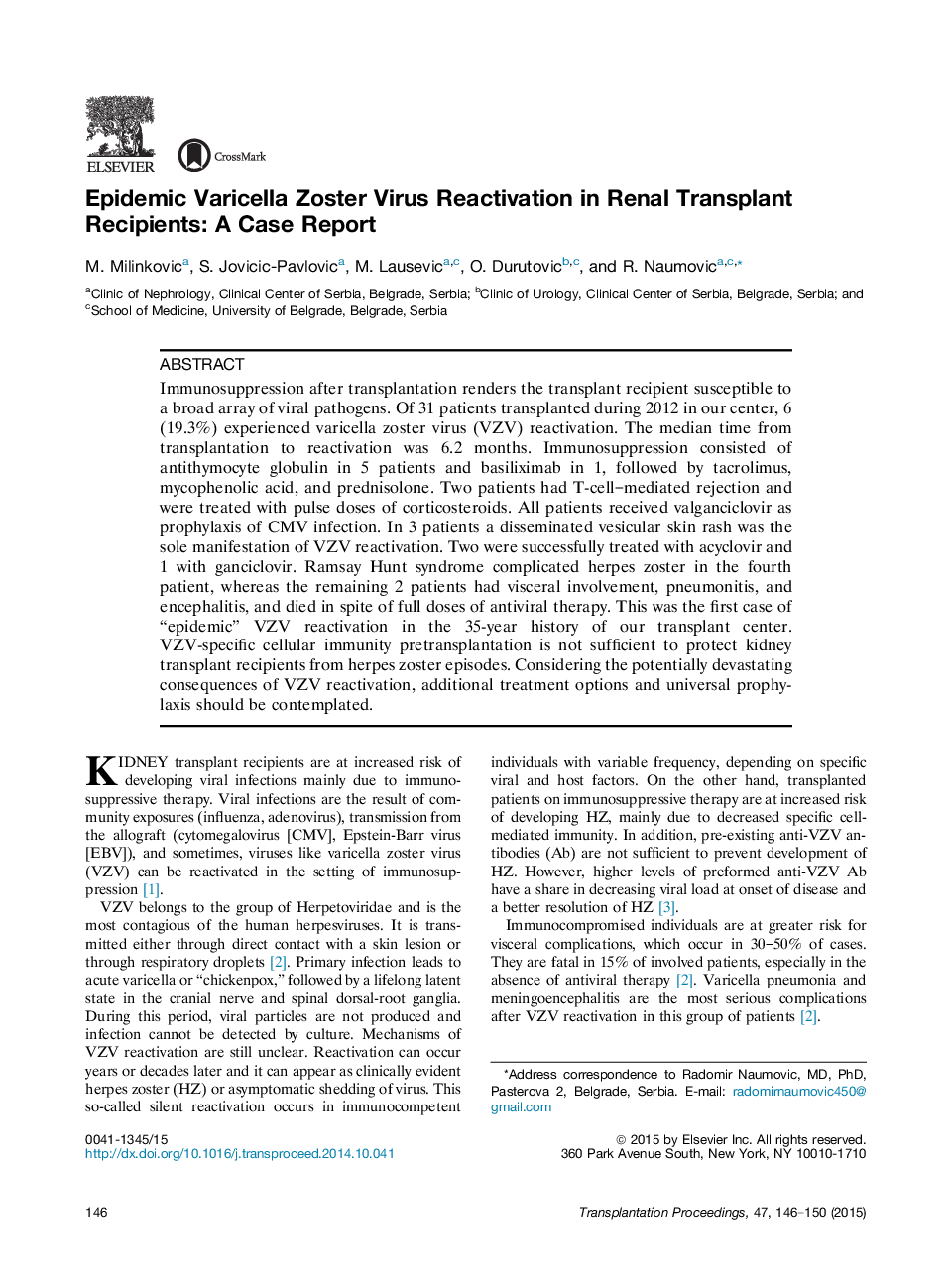| Article ID | Journal | Published Year | Pages | File Type |
|---|---|---|---|---|
| 4256385 | Transplantation Proceedings | 2015 | 5 Pages |
Immunosuppression after transplantation renders the transplant recipient susceptible to a broad array of viral pathogens. Of 31 patients transplanted during 2012 in our center, 6 (19.3%) experienced varicella zoster virus (VZV) reactivation. The median time from transplantation to reactivation was 6.2 months. Immunosuppression consisted of antithymocyte globulin in 5 patients and basiliximab in 1, followed by tacrolimus, mycophenolic acid, and prednisolone. Two patients had T-cell–mediated rejection and were treated with pulse doses of corticosteroids. All patients received valganciclovir as prophylaxis of CMV infection. In 3 patients a disseminated vesicular skin rash was the sole manifestation of VZV reactivation. Two were successfully treated with acyclovir and 1 with ganciclovir. Ramsay Hunt syndrome complicated herpes zoster in the fourth patient, whereas the remaining 2 patients had visceral involvement, pneumonitis, and encephalitis, and died in spite of full doses of antiviral therapy. This was the first case of “epidemic” VZV reactivation in the 35-year history of our transplant center. VZV-specific cellular immunity pretransplantation is not sufficient to protect kidney transplant recipients from herpes zoster episodes. Considering the potentially devastating consequences of VZV reactivation, additional treatment options and universal prophylaxis should be contemplated.
